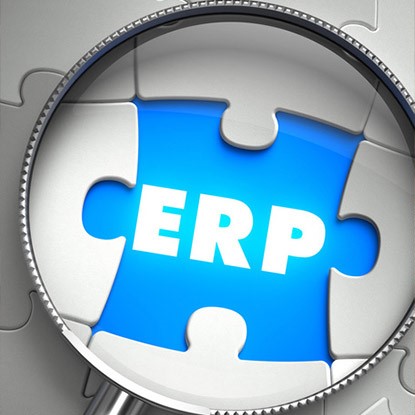Streamline Your Invoicing Workflow: Harnessing the Power of ERP Integration and Cloud Automation


Explore the benefits of invoice automation for cloud-based ERPs with our insightful resource. Learn how integrating automation streamlines invoicing workflows, reduces manual errors, and optimizes accounts payable processes for modern businesses.
Cloud-based ERPs (Enterprise Resource Planning) have become the backbone of many businesses. Yet, manual invoice processing often remains a bottleneck, hindering efficiency and causing frustration. Invoice automation, seamlessly integrated with your cloud ERP, offers the key to unlock a new era of streamlined workflows and improved financial health.
This article dives deep into the powerful combination of invoice automation and cloud ERPs. We’ll explore how they work together, the benefits they offer, and how they can transform your AP (Accounts Payable) operations.
Whether you’re a finance professional, business owner, or simply looking to optimize your financial processes, understanding invoice automation for cloud ERPs is crucial for achieving peak efficiency and control.
Unlock the power of seamless invoice automation with InvoiceAction. Streamline your accounts payable processes and integrate with cloud ERPs effortlessly. Schedule a demo today!
Book a demo now
Invoice automation refers to the process of using technology to streamline and digitize the invoicing process within an organization. It involves automating tasks such as invoice creation, submission, approval workflows, and payment processing, reducing manual intervention and errors.
Invoice automation solutions often utilize Optical Character Recognition (OCR) and machine learning algorithms to extract data from invoices and automate repetitive tasks.
By automating invoice processes, businesses in all industries can improve efficiency, reduce processing times, and gain better visibility into their financial operations.
Overall, invoice automation helps organizations save time and resources, minimize errors, and optimize cash flow management.
Cloud-based Enterprise Resource Planning (ERP) systems are software solutions that manage core business processes, such as accounting, human resources, inventory management, and customer relationship management, through cloud computing technology.
Unlike traditional on-premises ERP systems, cloud-based ERPs are hosted on remote servers and accessed via the internet, offering scalability, flexibility, and accessibility.
To make processes even smoother, cloud-based ERPs provide real-time data insights, centralized data storage, and seamless integration with other business applications, enabling organizations to streamline operations and make informed decisions.
In addition, cloud-based ERPs are continuously updated and maintained by the service provider, ensuring that organizations have access to the latest features and security updates.
Manual invoice processing in cloud-based ERPs can lead to inefficiencies, errors, and delays in invoice approval and payment. Without automation, organizations may struggle with manual data entry, invoice routing, and tracking in cloud-based ERP systems, resulting in processing bottlenecks and missed payment deadlines.

Manual invoice processing also increases the risk of errors and discrepancies, such as duplicate payments, incorrect data entry, and invoice routing errors.
In addition, manual invoice processing requires significant time and resources, detracting from other strategic initiatives and business priorities.
It’s clear that the challenges of manual invoice processing in cloud-based ERPs underscore the need for automation solutions to streamline and optimize financial processes.
Invoice automation is crucial for cloud-based ERPs as it enhances efficiency and accuracy in financial processes. By automating invoice processing, organizations can reduce manual errors, processing times, and costs associated with paper-based invoicing.
Cloud-based ERPs, with integrated invoice management automation capabilities, provide real-time visibility into financial data, enabling organizations to make informed decisions and optimize cash flow management. In addition, invoice automation streamlines approval workflows, reduces the risk of fraud, and enhances compliance with regulatory requirements.
Overall, the integration of invoice automation with cloud-based ERPs improves productivity, enhances financial control, and drives operational excellence within organizations.

Discover the efficiency of ArtsylPay in payment processing and integrating with cloud ERPs. Request a free personalized demo now!
Integration of invoice automation with cloud-based ERPs involves seamlessly connecting automated invoice processing functionalities with the ERP system’s financial modules. This integration allows for the automatic transfer of invoice data, such as invoice amounts, due dates, and vendor information, into the ERP system, eliminating the need for manual data entry.
By integrating invoice automation with cloud-based ERPs, businesses can achieve greater efficiency, accuracy, and transparency in their financial processes. Also, integration enables real-time updates and synchronization between the invoice automation platform and the ERP system, ensuring that financial data is always up-to-date and accurate.
To sum things up, the integration of invoice automation with cloud-based ERPs streamlines the invoicing process, reduces errors, and enhances the organization’s ability to manage finances effectively.
RELATED: Optimizing Invoice Automation for ERP Systems
Integrating invoice automation with cloud-based ERPs streamlines the entire invoice processing workflow, from invoice capture to approval and payment. Here are a few more benefits:
As you can see, integrating invoice automation with cloud-based ERPs improves financial transparency, reduces operational costs, and enhances the organization’s ability to manage cash flow effectively.
Say goodbye to manual invoice processing hassles. Experience the ease and accuracy of InvoiceAction in streamlining your accounts payable tasks and integrating seamlessly with your cloud ERPs. Get started today!
Book a demo now
Invoice automation for cloud-based ERPs offers robust features such as automated data capture, streamlined approval workflows, and seamless integration with accounting systems. These features enable businesses to digitize and automate the entire invoice processing cycle, from capturing invoice data to approval and payment, within their cloud-based ERP environment.
With invoice automation, companies operating in nearly every niche can achieve greater efficiency, accuracy, and transparency in their financial operations, leading to improved decision-making and cost savings.
Data capture and extraction capabilities in invoice automation solutions enable the automatic extraction of key invoice information, such as vendor details, invoice numbers, and line item data, from various document formats.
Using Optical Character Recognition (OCR) technology, these solutions accurately capture data from invoices, reducing manual data entry errors and processing time.
By automating intelligent data capture and extraction, organizations can accelerate invoice processing, improve data accuracy, and enhance operational efficiency within their cloud-based ERP systems.
Invoice automation for cloud-based ERPs streamlines invoice approval workflows by automating the routing of invoices to the appropriate stakeholders based on predefined rules and criteria.
Automated workflows enable organizations to establish standardized approval processes, track invoice status in real-time, and enforce compliance with internal policies and regulatory requirements.
By automating approval processes, organizations can reduce bottlenecks, minimize delays, and improve visibility and control over the entire invoice lifecycle.

Contact Us for an in-depth
product tour!
Integration with accounting systems allows invoice automation solutions to seamlessly transfer invoice data and transactions to the organization’s cloud-based ERP system.
This integration ensures data consistency, eliminates manual data entry, and enables real-time synchronization between the invoice automation platform and the ERP system.
By integrating with accounting systems, organizations can streamline financial processes, improve accuracy, and gain insights into their financial performance more effectively.
Reporting and analytics capabilities in invoice automation solutions provide organizations with comprehensive insights into their invoice processing performance, trends, and metrics.
These capabilities enable organizations to generate customizable reports, track key performance indicators, and identify areas for process optimization and cost savings.
By leveraging reporting and analytics, organizations can make data-driven decisions, improve operational efficiency, and enhance transparency and compliance within their cloud-based ERP environment.
Take your invoice automation to the next level with ArtsylPay intelligent payment automation platform. Enhance productivity, reduce payment errors, and seamlessly integrate with your cloud ERPs.
Contact us to learn more!
Book a demo now
Several companies have successfully implemented invoice automation in their cloud-based ERP systems to streamline their accounts payable processes and improve efficiency. Here are some real-world examples:
Netflix implemented invoice automation within its cloud-based ERP system to manage its growing volume of invoices efficiently. By automating data capture, approval workflows, and integration with its ERP system, Netflix reduced processing times and minimized errors in its accounts payable processes.
Salesforce, a leading cloud-based CRM platform, integrated invoice automation into its ERP system to streamline invoice processing and improve financial visibility. By automating workflows and integrating with its accounting systems, Salesforce reduced manual effort and gained real-time insights into its financial operations.
Airbnb leveraged invoice automation within its cloud-based ERP system to manage its global network of suppliers and vendors. By automating invoice capture, approval processes, and payment reconciliation, Airbnb improved efficiency, reduced costs, and enhanced vendor relationships.
Dropbox implemented invoice automation in its cloud-based ERP system to centralize invoice management and improve process visibility. By automating data extraction, approval workflows, and integration with its financial systems, Dropbox achieved greater efficiency and accuracy in its accounts payable processes.
RELATED: A Guide to Final Invoice: Everything You Need to Know
Slack adopted invoice automation within its cloud-based ERP system to streamline invoice processing and improve financial controls. By automating invoice routing, approvals, and reconciliation, Slack reduced processing times and enhanced compliance with internal policies and regulatory requirements.
These real-world examples demonstrate the tangible benefits of implementing invoice automation in cloud-based ERP systems, including improved efficiency, reduced errors, enhanced visibility, and stronger financial controls. By leveraging automation technology, companies can optimize their accounts payable processes and drive greater value from their cloud-based ERP investments.
Experience the benefits of InvoiceAction in optimizing your invoice processing workflows and integrating with cloud ERPs. Maximize efficiency, accuracy, and visibility in your financial operations. Reach out to our
team to get started!
Book a demo now
Data capture and extraction involve automatically identifying and extracting relevant information from invoices, such as invoice numbers, dates, amounts, and vendor details, using technologies like Optical Character Recognition (OCR).
This process eliminates manual data entry, reduces errors, and accelerates invoice processing within cloud-based ERP systems, enhancing efficiency and accuracy in financial operations.
RELATED: Credit Invoice or Credit Note? Find Out The Difference
Automated workflows and approval processes in invoice automation for cloud-based ERPs streamline the routing and approval of invoices based on predefined rules and criteria.
By automating these processes, organizations can:
This leads to improving overall efficiency and transparency in accounts payable operations.
Integration with accounting systems allows seamless transfer of invoice data and transactions between the invoice automation platform and the organization’s cloud-based ERP system. This integration ensures data consistency, eliminates duplicate data entry, and enables real-time synchronization between invoice processing and financial reporting, enhancing visibility and control over financial processes.
By integrating invoice automation with your cloud ERP, you can unlock a plethora of benefits:
Streamline workflows and free up resources for more strategic initiatives with invoice automation, coupled with the power of cloud ERPs. Ready to transform your AP operations?
Discover the cost-saving power of ArtsylPay in automating invoice processing and seamlessly integrating payment processing functionality with your cloud ERPs. Request a consultation with our experts now!
Book a demo now